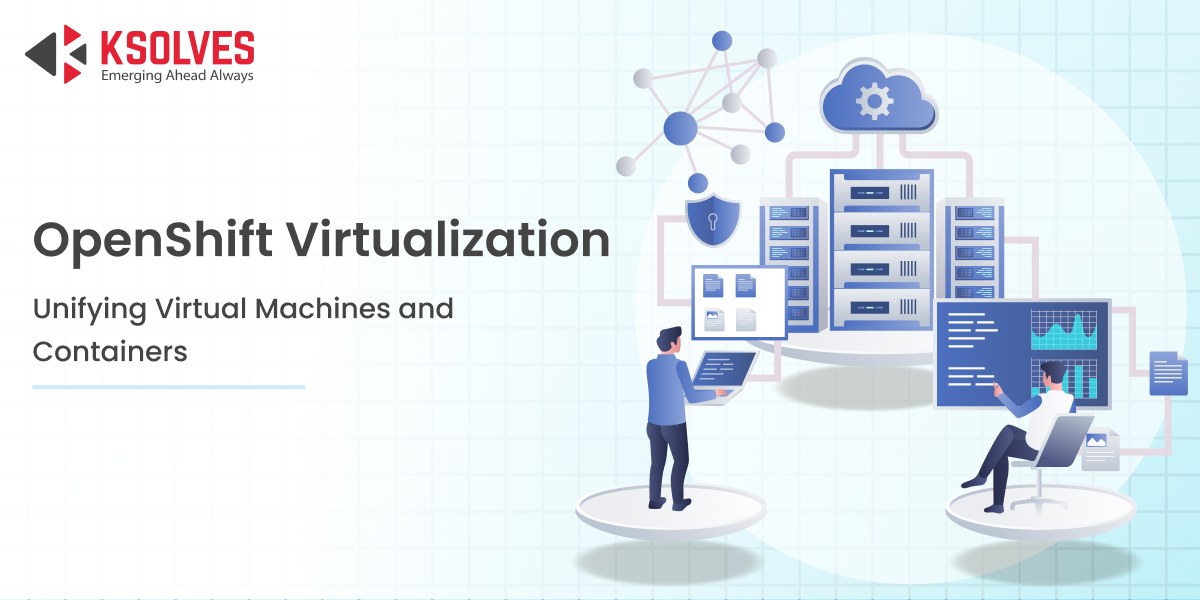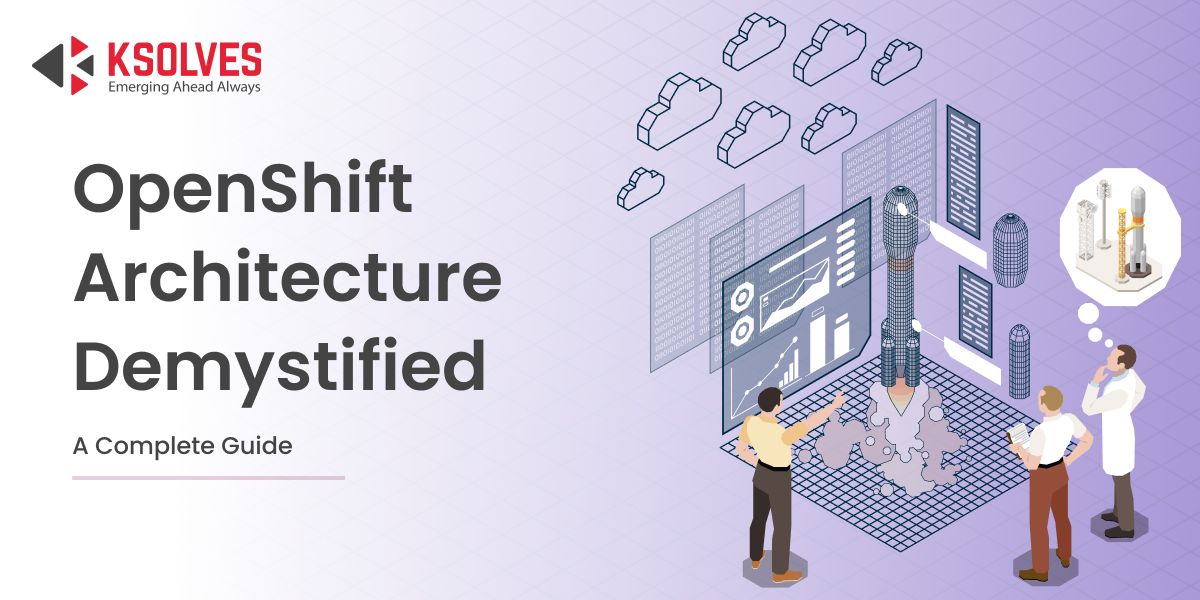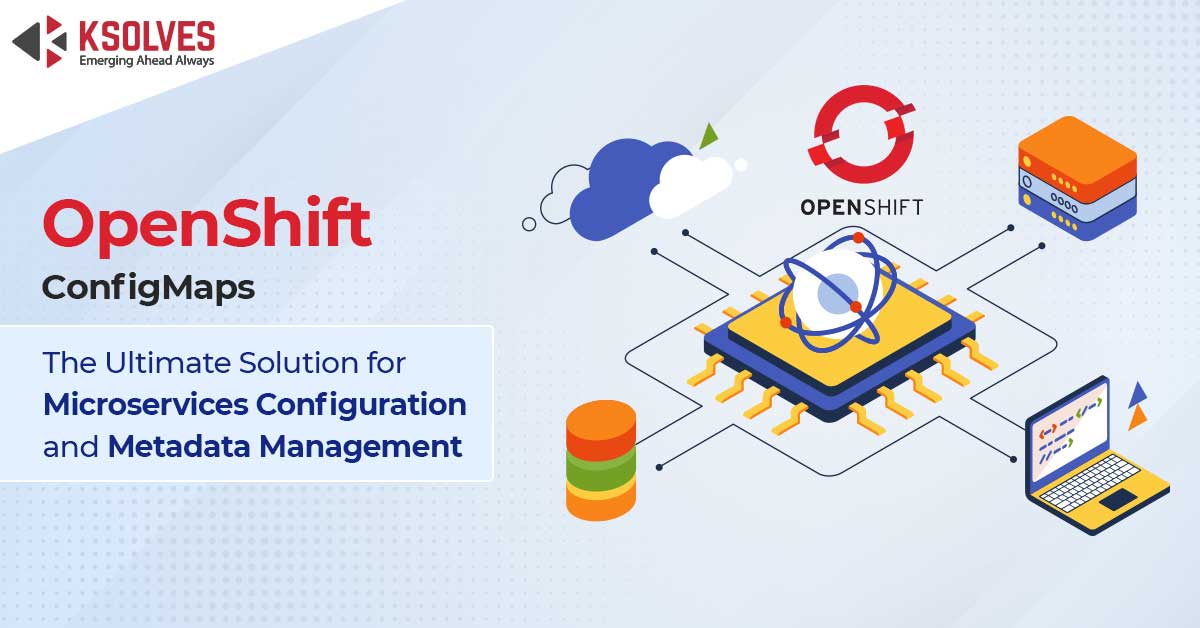OpenShift Virtualization Explained: Architecture, Use Cases, and Benefits
OpenShift
5 MIN READ
November 11, 2025
![]()

The way enterprises deploy and manage workloads is changing fast. What once ran exclusively on bulky virtual machines is now shifting toward lightweight, containerized environments. Yet for most organizations, virtual machines (VMs) aren’t going anywhere; they still power mission-critical applications, databases, and legacy systems that can’t be refactored overnight.
This creates a new kind of challenge: how do you bridge the gap between VMs and containers without managing two completely different infrastructures?
That’s where Red Hat OpenShift Virtualization comes in. Built on the open-source KubeVirt project, it brings the world of VMs into Kubernetes. It allows you to run, manage, and scale both virtual and containerized workloads on a single, unified OpenShift platform.
This blog dives deep into how OpenShift Virtualization works, its architecture, key use cases, and the tangible benefits it brings to enterprise IT operations.
What is OpenShift Virtualization?
OpenShift Virtualization is a feature of Red Hat OpenShift that allows users to run and manage virtual machines alongside containers in a single platform. It eliminates the need for a separate hypervisor-based environment such as VMware or Hyper-V.
Powered by KubeVirt, OpenShift Virtualization extends Kubernetes capabilities by treating VMs as first-class Kubernetes resources. This means teams can use the same OpenShift tools, APIs, and CI/CD pipelines to deploy, monitor, and scale both containerized and virtualized workloads seamlessly.
In essence, it allows enterprises to:
- Run existing VMs natively inside OpenShift without re-platforming.
- Containerize legacy applications gradually at their own pace.
- Simplify management across hybrid and multi-cloud environments.
How OpenShift Virtualization Works
At its foundation, OpenShift Virtualization leverages KubeVirt to extend Kubernetes capabilities beyond containers. It converts traditional virtual machines (VMs) into Kubernetes-native objects, allowing both VMs and containers to coexist and be managed through the same Kubernetes control plane and API.
This means administrators and developers can use familiar OpenShift tools and workflows – the web console, CLI (oc), and YAML definitions – to deploy, monitor, and manage virtual machines just as they would manage pods or deployments.
Here’s how it functions behind the scenes:
- KubeVirt Integration
KubeVirt adds virtualization custom resource definitions (CRDs) and controllers to OpenShift’s Kubernetes API. It enables the orchestration of VM lifecycles using standard Kubernetes primitives.
- Unified Control Plane
The same OpenShift interface is used to create, start, stop, and scale virtual machines. This unification eliminates the need for separate virtualization infrastructure and simplifies hybrid workload management.
- Storage Management
OpenShift Virtualization uses Persistent Volumes (PVs) and Persistent Volume Claims (PVCs) to attach durable storage to virtual machines. It integrates with Container Storage Interface (CSI) drivers, supporting a wide range of storage backends including Ceph, NFS, and cloud storage services.
- Networking
The Multus CNI plugin enables multiple network interfaces for each VM. It allows advanced networking setups such as VLANs, SR-IOV, or bonded interfaces, ideal for complex enterprise or telco deployments.
- Scheduling & Resource Optimization
The Kubernetes scheduler intelligently assigns workloads to nodes based on resource requests, affinity rules, and labels. This ensures optimal performance, isolation, and efficient resource utilization across mixed VM and container workloads.
By blending virtualization into Kubernetes’ native ecosystem, OpenShift Virtualization delivers the best of both worlds — the flexibility of containers with the stability of virtual machines.
OpenShift Virtualization Architecture
Let’s dive deep into the architecture of OpenShift Virtualization.
a. Core Components
These are the building blocks that enable OpenShift to create, run, and manage virtual machines as Kubernetes-native resources:
- virt-controller
Responsible for managing the entire lifecycle of virtual machines, from provisioning and startup to shutdown and deletion. It acts much like a Kubernetes controller, ensuring the desired state of VMs matches the defined configuration.
- virt-api
Serves as the API endpoint between users (or tools like the OpenShift console) and the KubeVirt controllers. It translates Kubernetes-style requests into virtualization-specific actions.
- virt-handler
Deployed on every compute node, the virt-handler monitors the health and status of local VMs. It communicates with the KubeVirt control plane and ensures VMs operate reliably within their assigned nodes.
- virt-launcher
A lightweight pod wrapper that encapsulates a single VM instance. It isolates the virtual machine from other workloads on the node, ensuring security, performance consistency, and easier scheduling.
b. Integration Layers
OpenShift Virtualization seamlessly connects to existing OpenShift networking, storage, and security frameworks to ensure consistency across workloads.
- Networking
Managed via Multus CNI, which allows attaching multiple network interfaces to a VM. This supports advanced setups like SR-IOV, VLAN segmentation, and dual-homing, enabling high-performance networking essential for telco and NFV workloads.
- Storage
Integrated with OpenShift’s Container Storage Interface (CSI), enabling dynamic provisioning and attachment of storage volumes. VMs can leverage the same persistent storage solutions as containers, including Ceph, GlusterFS, NFS, or cloud storage backends.
- Security
Security enforcement is inherited from OpenShift’s robust framework, including Role-Based Access Control (RBAC), Security Context Constraints (SCCs), and SELinux policies. This ensures consistent governance and isolation for both container and VM workloads.
c. Monitoring & Management
Visibility and automation are central to the OpenShift Virtualization experience.
- OpenShift Web Console
Provides a unified dashboard to monitor, configure, and troubleshoot both VMs and containerized workloads through a single interface.
- Prometheus & Grafana
Offer integrated metrics collection, visualization, and alerting for performance, capacity, and infrastructure health monitoring.
- Operators
Automate complex lifecycle management tasks, such as provisioning, upgrades, scaling, and configuration drift correction. This ensures consistent environments with minimal manual intervention.
5 Key Use Cases of OpenShift Virtualization
OpenShift Virtualization empowers organizations to bring together traditional and modern workloads under one roof. Whether it’s about bridging legacy applications with microservices, enabling developer agility, or building resilient hybrid environments, the platform supports a wide range of real-world enterprise use cases.
1. Application Modernization
Most enterprises rely on long-standing applications that still run on virtual machines. Rewriting them into microservices overnight isn’t always practical or cost-effective.
With OpenShift Virtualization, organizations can migrate existing VM-based workloads into OpenShift without refactoring the codebase. Legacy systems continue running in VMs while new services, such as APIs, analytics modules, or frontend layers, are developed in containers.
This coexistence model allows a phased modernization journey, reducing risk and enabling teams to modernize at their own pace while maintaining uptime and performance.
2. Unified Infrastructure Management
Managing separate environments for containers and VMs creates unnecessary complexity, duplicated monitoring, and higher operational costs.
OpenShift Virtualization provides a single control plane for managing VMs, containers, and hybrid workloads. IT administrators can deploy, monitor, and scale applications, regardless of form factor, using the same OpenShift tools, Operators, and pipelines.
The result? Simplified operations, reduced infrastructure sprawl, and consistent governance across hybrid and multi-cloud environments.
3. Dev/Test Environments
Developers often need to replicate production-like environments for integration testing or performance benchmarking. Traditionally, this meant provisioning heavy VMs on separate infrastructure.
With OpenShift Virtualization, teams can spin up VMs directly within Kubernetes clusters, integrate them into CI/CD pipelines, and automate environment teardown when testing is complete.
This approach shortens feedback loops, reduces resource waste, and accelerates release cycles, making it ideal for DevOps and QA teams.
4. Edge & Telco Deployments
For telecommunication providers and edge computing environments, OpenShift Virtualization supports Network Function Virtualization (NFV) and distributed edge workloads.
Its combination of SR-IOV networking, real-time performance tuning, and remote cluster management allows telcos to run both virtual network functions (VNFs) and containerized network functions (CNFs) on the same OpenShift platform.
The result is lower latency, improved throughput, and simplified orchestration across edge nodes and data centers.
5. Disaster Recovery and High Availability
Resiliency is critical in enterprise IT. OpenShift Virtualization leverages Kubernetes’ replication, backup, and self-healing capabilities to deliver high availability across clusters and regions.
Workloads can be automatically rescheduled to healthy nodes, while persistent storage integrations ensure data durability. Combined with Red Hat Advanced Cluster Management (ACM), enterprises can build multi-cluster DR strategies with minimal downtime and faster failover.
Benefits of OpenShift Virtualization
- Unified Operations: A single control plane to manage both virtual and containerized workloads, simplifying operations and governance.
- Cost Optimization: Reduces licensing and maintenance costs by consolidating VMs and containers on a single OpenShift platform.
- Accelerated Modernization: Run legacy applications as-is while gradually transitioning them into microservices.
- Enhanced Developer Experience: Self-service provisioning, GitOps, and CI/CD pipelines empower developers to manage full-stack workloads easily.
- Strong Security and Compliance: OpenShift’s enterprise-grade security framework, such as RBAC, namespaces, and SELinux, ensures isolation, compliance, and controlled access.
- Cloud and Edge Portability: Deploy workloads anywhere: on-premises, private clouds, or public cloud environments using consistent OpenShift tooling.
OpenShift Virtualization vs Traditional Virtualization
| Feature | Traditional Virtualization (VMware/Hyper-V) | OpenShift Virtualization |
| Management Plane | Separate stack for VMs | Unified Kubernetes control plane |
| Scalability | Manual or semi-automated | Dynamic auto-scaling via Kubernetes |
| Workload Type | Virtual Machines only | VMs and Containers together |
| Cost Structure | Proprietary licenses | Subscription-based OpenShift model |
| Modernization | Requires migration effort | Native coexistence and gradual transition |
| Automation | Limited scripting | Full CI/CD and GitOps integration |
Challenges and Best Practices of OpenShift Virtualization
While OpenShift Virtualization delivers a unified platform for both containers and VMs, its adoption comes with a few operational challenges that require thoughtful planning and best practices.
Key Challenges
- Learning Curve
Transitioning from traditional hypervisor-based environments to Kubernetes-native VM management can be complex. Teams must understand Kubernetes constructs, YAML configurations, and container networking models.
- Resource Contention
Running VMs and containers on the same cluster demands careful resource allocation. Without proper scheduling policies, you risk CPU or memory contention that can degrade performance.
- Networking Complexity
Migrating legacy workloads with intricate network configurations (e.g., VLANs, SR-IOV) to Kubernetes networking models requires meticulous setup and testing to maintain connectivity and performance.
Best Practices for a Smooth Implementation
- Use Node Affinity and Taints
Define node affinity rules and use taints/tolerations to ensure VMs are scheduled on optimal nodes, avoiding resource contention with containerized workloads.
- Leverage Operators for Lifecycle Automation
Utilize OpenShift Virtualization Operators to handle updates, configuration management, and version alignment across clusters automatically.
- Establish Continuous Monitoring:
Integrate Prometheus and Grafana dashboards for real-time insights into VM and container performance, helping detect bottlenecks early. - Start Small, Scale Gradually
Begin with non-critical or dev/test workloads before moving production systems. This phased approach allows teams to gain hands-on experience while minimizing risk.
- Standardize Networking and Storage Policies
Maintain consistency in network and storage configurations across environments to streamline migration and ensure predictable performance.
Final Words
OpenShift Virtualization represents a major step forward in simplifying IT operations, unifying traditional VMs and modern containers on one intelligent platform. It offers flexibility, scalability, and security while empowering teams to modernize at their own pace. For enterprises seeking to balance innovation with stability, OpenShift Virtualization delivers the perfect bridge between legacy systems and cloud-native infrastructure.
At Ksolves, we help enterprises unlock the full potential of OpenShift through our OpenShift consulting services, covering everything from cluster deployment and automation to OpenShift Virtualization and hybrid cloud optimization. Our certified Red Hat engineers ensure your workloads are secure, scalable, and future-ready.
Partner with us to transform your infrastructure with OpenShift Virtualization today.






AUTHOR
OpenShift
Share with